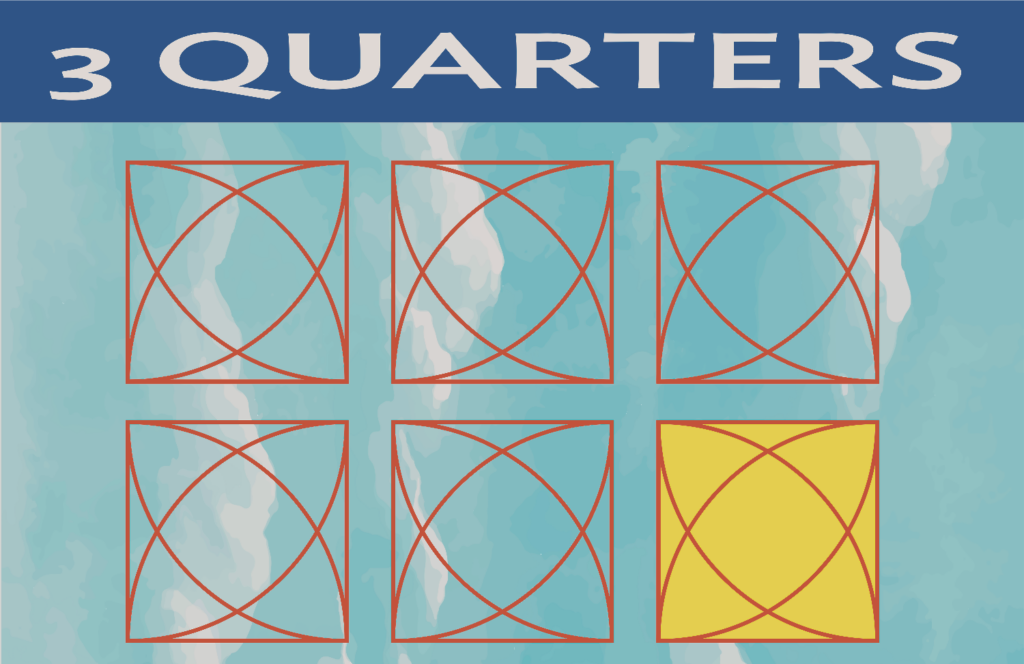Gestalt is a german word and it means completing a pattern or a set. This act of completion in ‘3 Quarters’ is the many many ways in which you can complete a 3/4 circle. But completion is not easily arrived at. It is a struggle. You don’t just have to do the right thing, you also have to prevent the other player from doing the right thing. Mistakes can be made – because of timers that offer a deadlines for each move but also because when in a hurry, details get blurred and fuzzy.
If no player makes a mistake, nobody wins. Oversight is also a kind of mistake. It is highly improbable that each player is aware of cognisant of every other player’s move. We have noticed that players get tired and start making mistakes. One of the ways of winning any game is by tiring out one’s opponents. If a player potentially has multiple 3/4 circles completions across the board, then s/he has to forfeit one of them in order to keep moving the game forward, and because every small victory helps a player win in the entire game too.
At a very basic level, ‘3 Quarters’ is a set completion game. One 3/4 circle comprising of 3 quarters is a set. Completing a set, competing with other players, is a thrill and feeling of meeting a challenge. I have chosen to work with abstract geometries in this game. Set completion can be called a gestalt of the game. A gestalt is defined as, “an organised whole that is perceived as more than the sum of its parts.”
Players invest themselves in completing the gestalt of the game because it gives them more than the “yahoo” of winning a round of the game. We are here to find out what this is. Each completion of a 3/4 circle is a step towards an eventual victory. These steps are a simple competition — the more the better. But not all competitions can be won by application of pure effort. Some competitions are won by erroneous efforts of your opponents. Creating situations when they make mistakes in haste and eagerness…
These mistakes sometimes seem as the only move that can be made even if it helps the opponent and they are flawed. But somehow these moves are the ones that move the game forward. If all the players remain consistently engaged and no-one makes any mistake then the game drags on and is no fun. So although the game is to cultivate alertness in students before a class it progresses with the lack of attention.
With the deadline for each move, it is practically impossible to be conscious of all possible moves. Mistakes are bound to happen. So ‘3 Quarters’ is a game of alertness and un-conscious mistakes. The effort is to avoid mistakes. But they wouldn’t be called mistakes if they could be avoided.
I lose practically all games of ‘3 Quarters’ that I play. Designing the first version does not help in winning it.
The gestalt of the ‘3 Quarters’ board game
- by Prayas Abhinav
- September 3, 2022

Share on twitter
Share on linkedin
Share on facebook
Share on email